The Auberge Garden, Part 1: Laying the Foundations
This is the first part of a series of posts showing what we’ve done with the garden so far.
We have just spent six weeks of late summer at the Auberge in France, and at this stage it’s unsure when we’ll get back. So there was some upkeep to do, some poorly timed preparation, and the chance to set the foundations for the future.
The big question is what to do first when you go from this small patch in the back of our Melbourne flat that gets a couple of hours’ sunlight for a few months of the year, to this open expanse.
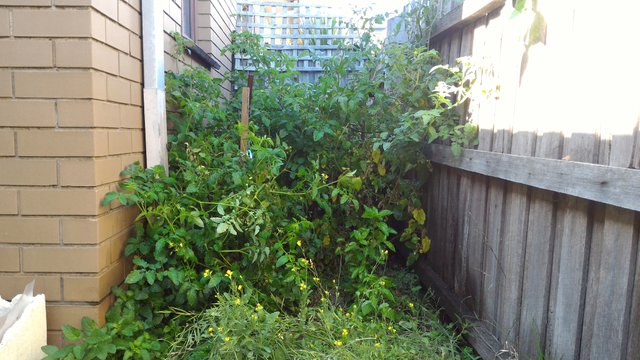
Our Melbourne garden.
The Auberge du Lis garden in mid-summer.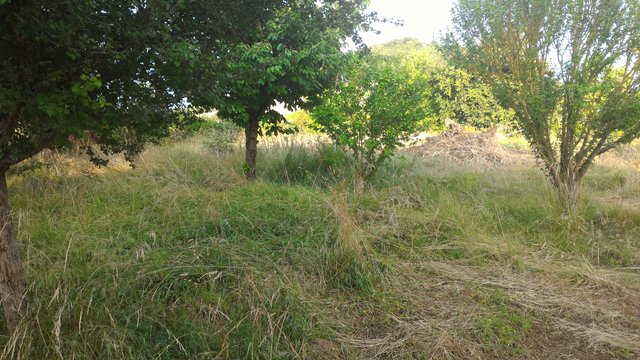
It being summer already, we’d missed the prime planting time, but there was still plenty to do. We’re playing the long game here, which has its benefits. Many people (myself included) might get impatient waiting for a compost heap to break down, a cover crop to grow, or some other soil amendments to ready the ground for planting. We aren’t going to be there for maybe a year, at the least, so it takes that waiting out of our hands. It also allowed us to think about how we would lay the foundations for the garden so nature could do its work, at its own pace, and hopefully when we do arrive it will be waiting there for us.
That evolution would be wonderful to watch unfold, but it’s still satisfying knowing that we are on the other side of the world, and our land is improving, becoming a thriving ecosystem in our absence.
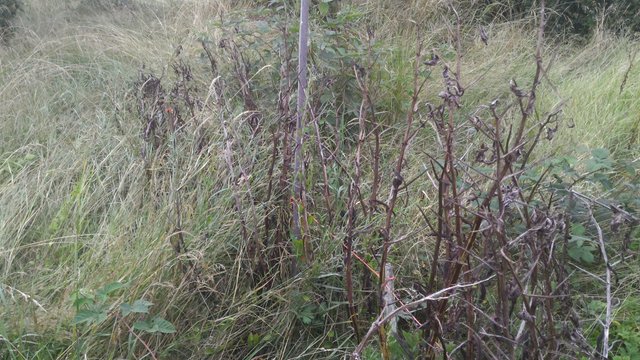 We spent two weeks at the Auberge in October last year, not really long enough to do more than familiarize ourselves with the place, and start making some plans in our heads. We tidied it up pretty well, but as you can see in that time, with a good winter’s rain and spring growth, it got pretty wild. We had a job on our hands.
We spent two weeks at the Auberge in October last year, not really long enough to do more than familiarize ourselves with the place, and start making some plans in our heads. We tidied it up pretty well, but as you can see in that time, with a good winter’s rain and spring growth, it got pretty wild. We had a job on our hands.
But we also had some things working in our favour. We know the soil is good – it’s clay soil, and nutrient dense. We’d planted some garlic and fava beans in October - the garlic thrived, and the beans, while a little sad by the time we came, had done their job nicely, repairing the soil, providing some compostable material, and hopefully reseeding themselves. 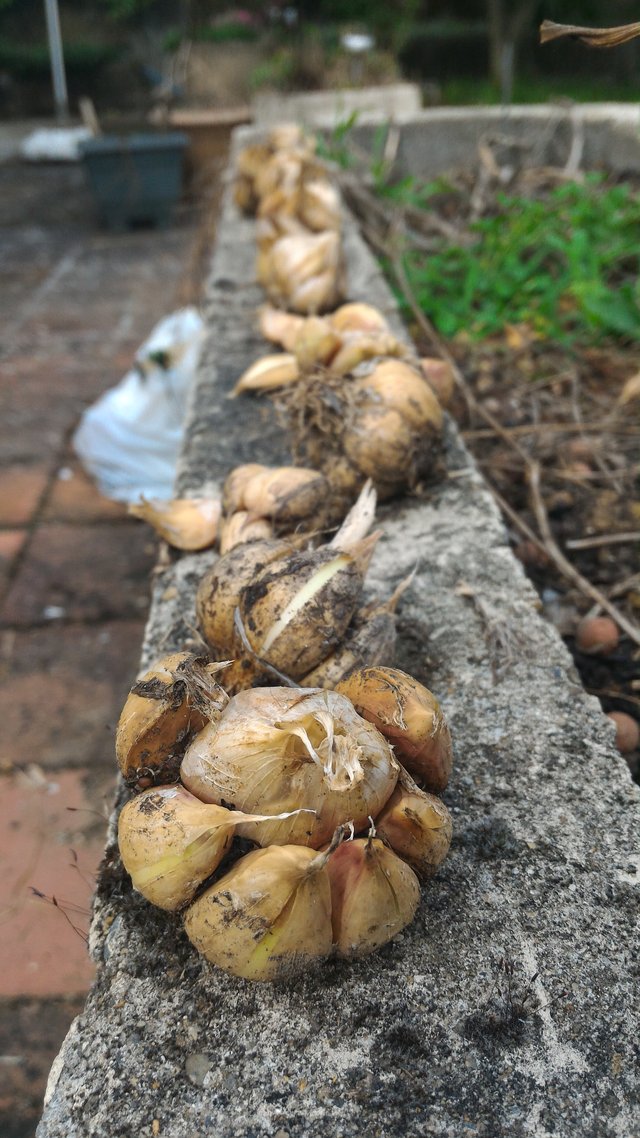
The soil is covered. The grass isn’t ideal, but it’s better than bare soil. Especially clay soil in a hot summer climate – it hardens quickly, and good luck getting a shovel in. Having something planted in the soil means the root system is allowing nutrients down into the soil, and that means the ecosystem below the surface is flourishing. And finally, grass provides an immense amount of green material to use as compost. Along with the grass, there were berry bushes, and various weedy shrubs.
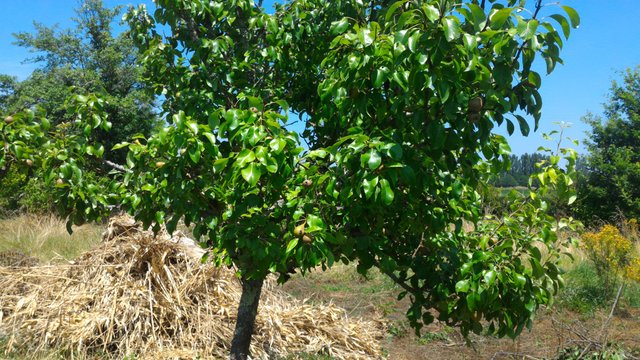
And the real kicker is that we already have established trees. Trees provide a great foundation for a garden, and obviously they are the part that takes longest to get established. From a permaculture perspective, being able to construct your garden around already established trees, and many of those productive fruit trees, is a real boon.
So we knew the soil is productive, but it could do with a bit of softening on top. While it may not be the quickest solution, building your soil up rather than digging in and down is beneficial in the long term, and doesn’t upset the delicate microbiology of the soil. So we had a pile of bamboo, roots, and soil, some open ground, and plenty of branches from last year’s hasty pruning – time to build a hugelkultur.
We hacked a path through the grass to the garden’s centre. A big open space where back in October we’d dropped sticks and branches and a blanket of old fruit over what was basically uncovered soil. We'd rolled out old carpet over it all and left it to compost (in hindsight I’d skip the carpet). This was where the first beds would be laid. A couple of days of persistent rain softened the ground enough to get digging. Turned it to mud, more accurately.
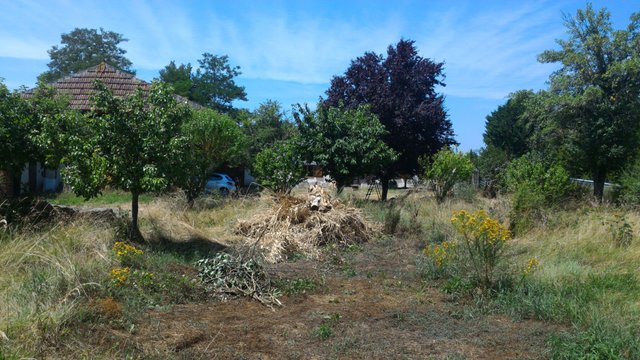
The first task undertaken was chopping down a pair of palm trees that flanked the front gate. These gave us the foundation for the hugelkulturs, along with some old wood in the barn that was too light to give off much heat when burned.
Plenty of books and webpages have been devoted to the concept of hugelkulturs, so I won’t go into great detail. In short, the idea is to pile up layers of compostable material into a mound that will become a garden bed. The varying layers break down at different speeds, providing nutrients over time. Larger pieces and tree trunks will take a long time to break down, and as a result will give nutrients to the soil for many years.
A shallow trench was dug to lay the larger pieces.
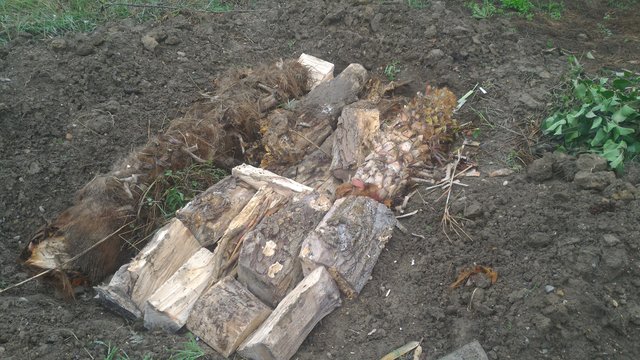
Next up were layers of palm fronds, bamboo, and various other sticks and branches scrounged from the garden. I expect the bamboo and palm fronds will break down quite quickly. Soil was dusted in as much as possible.
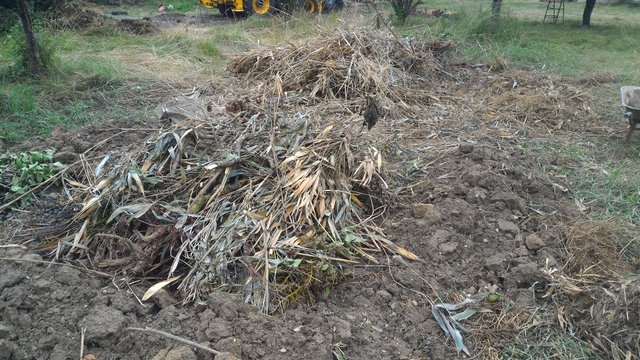
Once satisfied with the general shape of it, wet old grass was piled on top, and voila, one hugelkultur done.
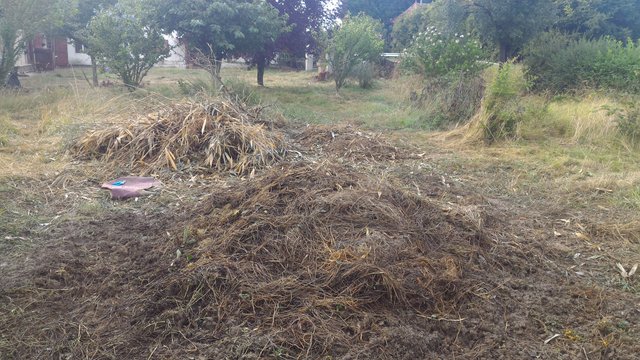
As it turned out, there was enough wood left over to build a second hugel, though this one was built straight on top of the ground, no digging at all, just to experiment with the differences over time (and less digging always helps). And there was plenty of leftover lighter material and loose soil to build three smaller mounds – these would probably break down right to ground level long before the larger mounds.
So the end result was two large and three small mounds. Not a bad start for when we come around to planting.
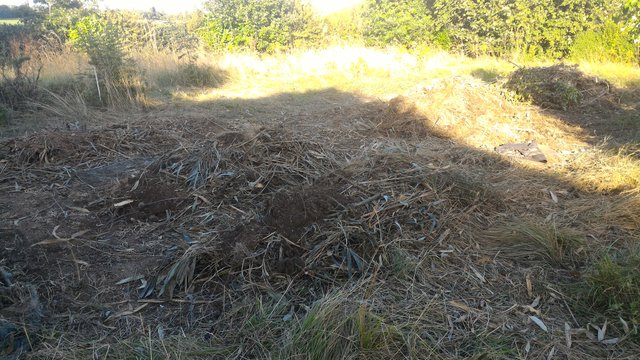
This last photo is almost three weeks later, when we’ve built up the smaller mounds with plenty more sticks and tree prunings and other green material collected as we went. Abundant grass clippings were piled on to finish them off.
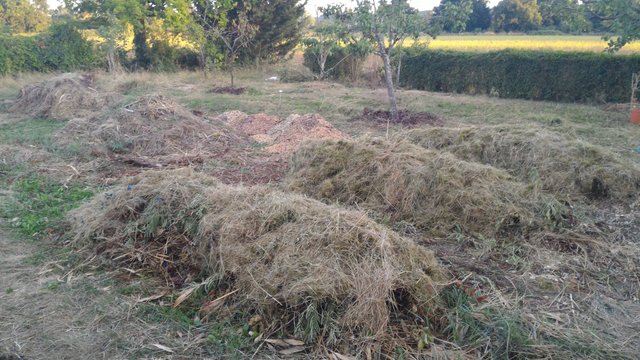
The whole process was surprisingly easy. The first hugelkultur was done in less than a day, by one person. The second large one took only a few hours, because there was no digging--that's the one at the back of the picture above. The three smaller ones were much quicker but they kept getting added to over time. It was a great way to use up substantial amounts of garden waste, with little effort, and letting time and the seasons do the hard work.
These beds should give us a great foundation for our first plantings, whenever that happens to be.
Stay tuned for the next installment of the Auberge garden preparation!
Thank you for posting.